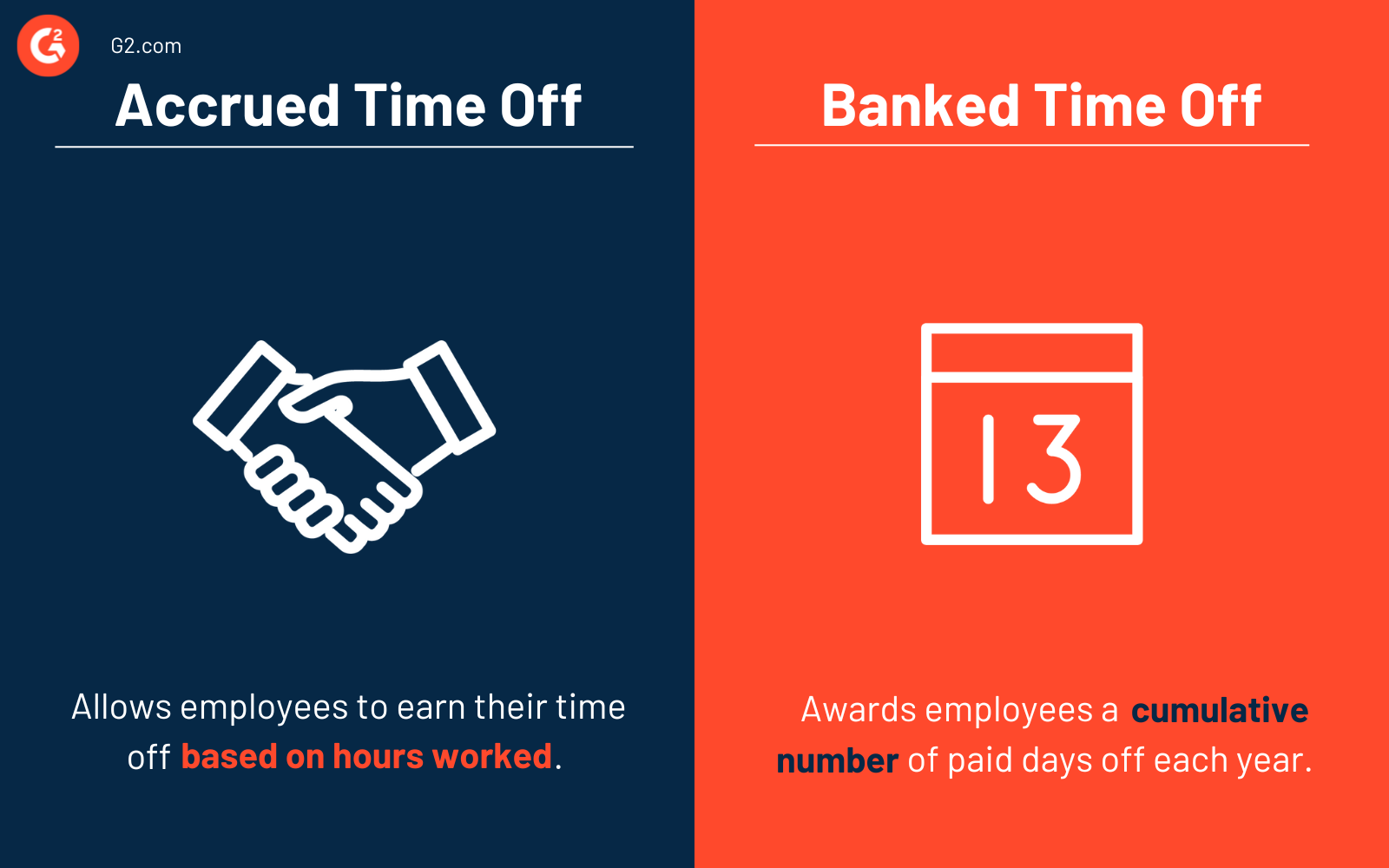What is time off accrual?
Time off accrual is when an employee has earned, but not used, all of their time off. Paid time off (PTO) accrual usually comes into play at the end of each business year or when an employee decides to leave their role at a company.
For example, an employee could accrue four hours off for every 40 hours worked, which equals one day off every two weeks.
In many businesses, accrued time off expires at the end of the year. Depending on a company’s paid time off policy, an employee might be able to decide if they want to roll over their accrued time to the following year, cash it out, or a combination of the two. If an employee leaves an organization, the business may have to pay out accrued time off in their final paycheck.
Companies use time and attendance software to track and manage employee time and attendance data by automatically calculating all hours worked and vacation time, holidays, sick days, and overtime.
Types of time off accrual
Accrued time off generally refers to any type of paid leave that an employee has earned but hasn't used yet. Types of paid time off that can be accrued are typically listed in a PTO policy. Some types of paid leave are:
- Vacation time
- Personal time
- Sick leave
- Parental leave
- Jury duty
- Holidays
- Bereavement
The amount and types of time off an organization offers depends on company size and industry, in addition to the state they operate in.
Common options for time off accrual
There is no federal law on paid time off, so there aren’t parameters around how much time off employees can accrue during a calendar year. However, if an organization considers implementing a PTO accrual policy, there are standard options to choose from. These include:
- PTO hours are accrued each pay period
- PTO hours are accrued each week
- PTO hours are accrued each month
- Accrued PTO is reset by the calendar year
- Accrued PTO is reset by fiscal year
- Accrued PTO is reset by each employee’s work anniversary
Companies can also reward loyalty by increasing the number of hours an employee can accrue in a year based on tenure. This means an employee with two years of tenure can accrue up to 10 days of PTO, while an employee who’s been with the company for five years or more can accrue up to 25 days.
Benefits of time off accrual
There are many benefits to offering employees the chance to accrue time off. Time off accrual is beneficial because it:
- Allows employees to earn time off according to how much they work or their years of experience
- Serves as a motivational element for employees to work more hours to earn more time off
- Gives employees a sense of accomplishment to have a sizable amount of time off they’ve accrued
- Minimizes unscheduled absences that can hinder small business operations
Time off accrual best practices
When an organization decides on an accrued time off policy, there are specific best practices to follow. These include:
- Determine eligibility: Outline which employees qualify to accrue time off and specify if it will be all employees or just full-time staff. Also, it’s important to establish parameters surrounding when eligibility begins up front.
- Calculations and payment: Be specific about how accrued time off is accumulated and calculated, and whether these calculations vary by employee level or tenure within the organization. Define if there’s a cap for how much time off an employee can accrue and if it can be rolled over from one year to the next.
- Requesting and using: Determine if there’s a length of time a new employee must wait to use accrued time off once it’s earned, how much notice employees must give, to whom requests should be submitted, and the purposes time off can be used for.
Accrued time off vs. banked time off
It’s easy to confuse accrued time off and banked time off as the same type of policy, but there are slight differences between the two.

Accrued time off allows employees to earn their time off based on hours worked. For example, an employee may earn two hours of paid time off each week they work.
Banked time off awards employees a cumulative number of paid days off each year. It pools all of an employee’s PTO into a single source that they can use or draw from as they see fit. This type of PTO can also be referred to as lump-sum PTO or front-loaded PTO because employees receive all their time off at once.

Mara Calvello
Mara Calvello is a Content and Communications Manager at G2. She received her Bachelor of Arts degree from Elmhurst College (now Elmhurst University). Mara writes customer marketing content, while also focusing on social media and communications for G2. She previously wrote content to support our G2 Tea newsletter, as well as categories on artificial intelligence, natural language understanding (NLU), AI code generation, synthetic data, and more. In her spare time, she's out exploring with her rescue dog Zeke or enjoying a good book.




















